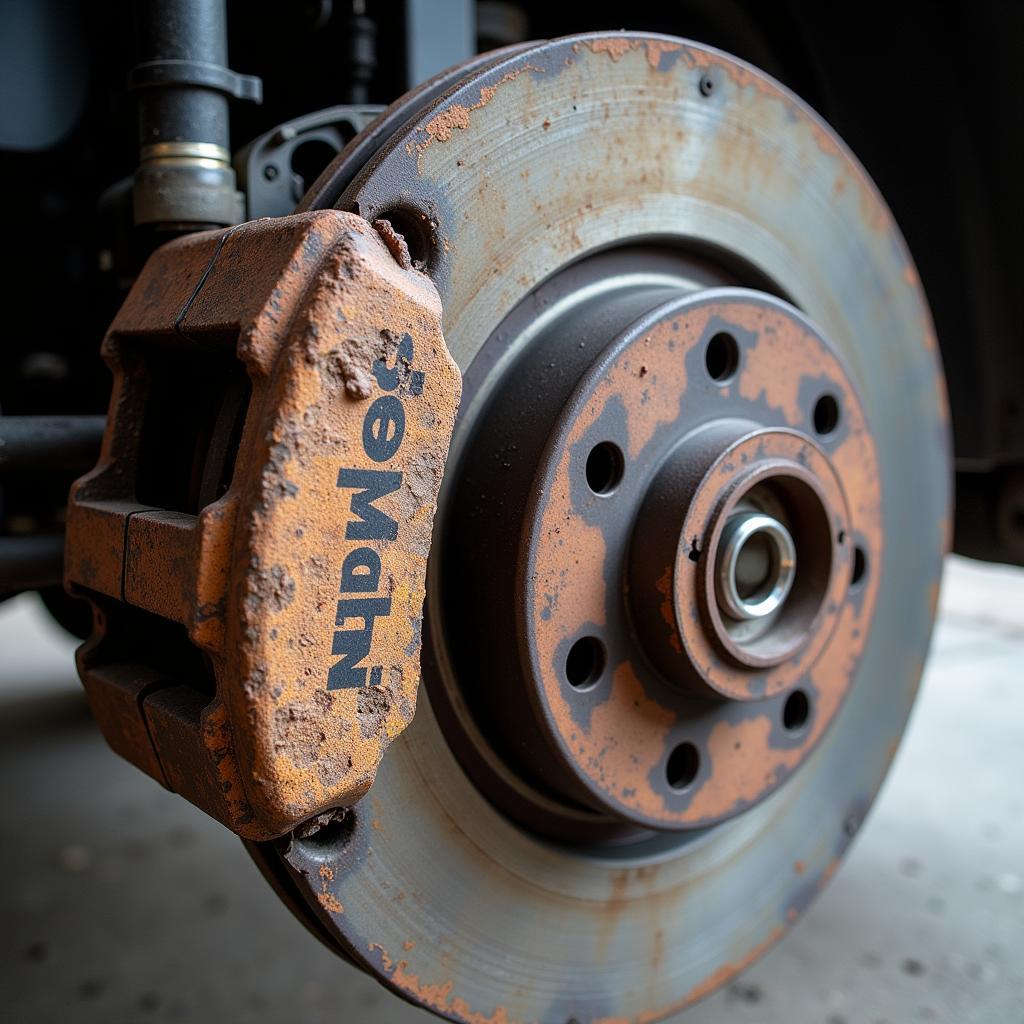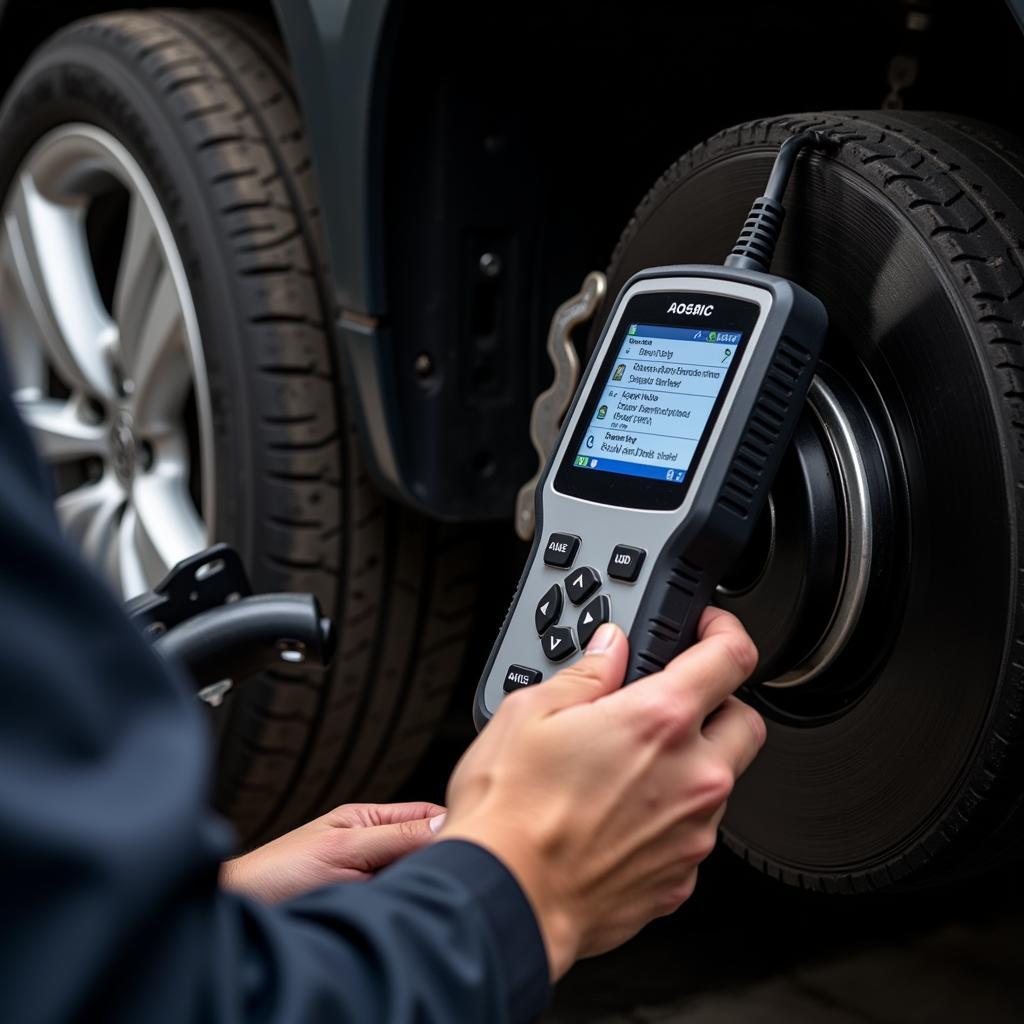The brake system warning light on your VW dashboard is an essential safety feature. When illuminated, it signals a potential problem with your vehicle’s braking system that requires immediate attention. Ignoring this warning light can compromise your safety and lead to costly repairs.
This comprehensive guide will help you understand the common causes of the VW brake system warning light and provide practical solutions for troubleshooting and fixing the issue.
Common Causes of the VW Brake System Warning Light
The brake warning light can illuminate for various reasons, ranging from minor issues to serious problems. Here are some of the most common culprits:
- Low Brake Fluid Level: This is the most frequent cause of the brake warning light. Brake fluid is crucial for transmitting force from the brake pedal to the wheels. A leak in the system or worn brake pads can lead to low fluid levels.
- Worn Brake Pads: Brake pads are designed to wear down over time. When they reach a certain thickness, a sensor triggers the warning light, indicating the need for replacement.
- Faulty Brake Light Switch: A malfunctioning brake light switch can prevent your brake lights from illuminating when you press the pedal and trigger the warning light.
- ABS Issues: Problems with the Anti-lock Braking System (ABS), such as a faulty sensor or control module, can also activate the warning light.
- Other Issues: In some cases, a faulty parking brake, damaged brake lines, or issues with the master cylinder can also be the root cause.
Troubleshooting the VW Brake System Warning Light
Before rushing to a mechanic, you can perform a few checks to narrow down the potential cause:
- Check the Brake Fluid Level: Park your car on a level surface and locate the brake fluid reservoir. It’s usually a translucent container with a black cap labeled “brake fluid.” Check the fluid level against the minimum and maximum markings.
- Inspect the Brake Pads: If possible, visually inspect your brake pads through the wheel spokes. Look for excessive wear or if the pad material is close to the metal backing plate.
- Check the Brake Lights: Have someone press the brake pedal while you observe the brake lights. If they don’t illuminate, the brake light switch might be faulty.
 Worn Brake Pads on a VW
Worn Brake Pads on a VW
When to Seek Professional Help
If you’re uncomfortable performing these checks or if your initial inspection doesn’t reveal the problem, it’s crucial to seek professional help. Driving with a compromised brake system is extremely dangerous.
Professional Diagnosis and Repair
A qualified mechanic will have the expertise and tools to diagnose the issue accurately. They may use a diagnostic scanner to read the vehicle’s computer for error codes related to the braking system.
Based on the diagnosis, the mechanic will recommend the necessary repairs, which may involve:
- Adding Brake Fluid: If the fluid level is low, the mechanic will top it off and inspect the system for leaks.
- Replacing Brake Pads: Worn brake pads will be replaced with new ones, ensuring optimal braking performance and safety.
- Changing the Brake Fluid: Brake fluid should be flushed and replaced periodically to prevent corrosion and maintain optimal performance.
- Repairing or Replacing Faulty Components: Depending on the diagnosis, the mechanic may repair or replace faulty components such as the brake light switch, ABS sensors, or master cylinder.
 VW Brake System Diagnostics
VW Brake System Diagnostics
Preventative Measures
Regular maintenance can help prevent many brake system issues. Ensure you adhere to your VW’s recommended maintenance schedule, including:
- Regular Brake Inspections: Have your brakes inspected at least once a year or as recommended in your owner’s manual.
- Timely Brake Pad Replacement: Don’t wait for the warning light to come on before replacing your brake pads.
- Brake Fluid Flush: Follow the manufacturer’s recommended interval for brake fluid flushes.
Conclusion
Addressing the VW brake system warning light promptly is crucial for your safety. By understanding the common causes, performing basic troubleshooting, and seeking professional help when needed, you can ensure your VW’s braking system remains in optimal condition, providing you with peace of mind on the road.
Remember, never ignore this vital warning light – your safety and the safety of others on the road depend on it.
FAQs
Can I drive my VW with the brake warning light on?
It’s not advisable to drive with the brake warning light on. It indicates a potential issue with your braking system.
How much does it cost to fix a VW brake system warning light?
The cost can vary depending on the underlying cause. It can range from a simple brake fluid top-up to more expensive repairs like replacing the ABS control module.
How often should I change my VW’s brake fluid?
Consult your owner’s manual for the recommended brake fluid flush interval, but it’s typically every 2-3 years.
Can a brake light switch cause the brake warning light to come on?
Yes, a faulty brake light switch can trigger the brake warning light.
Do worn brake pads always cause the brake warning light to illuminate?
Yes, most modern VW vehicles have brake pad wear sensors that activate the warning light when the pads reach a certain thickness.

